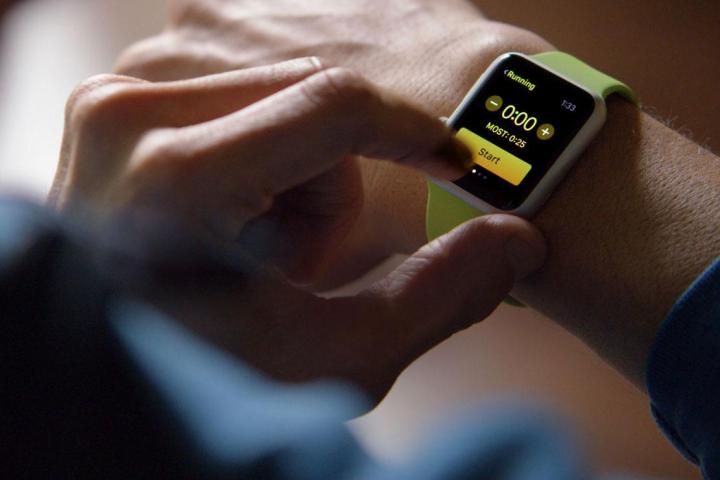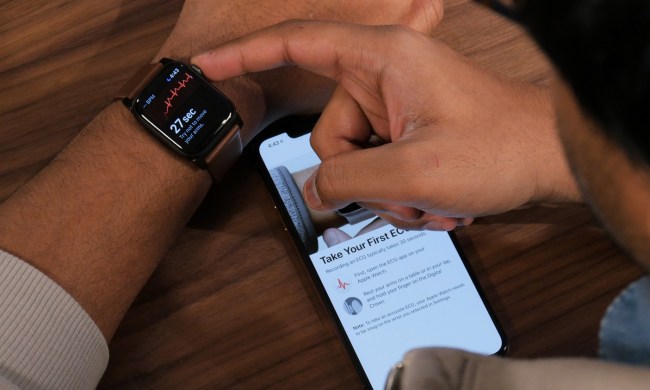
I own a drawer full of fitness trackers and used to love tracking my workouts. It was fun, adding a geeky element to something entirely un-geeky. If I wanted to go for a run, I could grab my Garmin Forerunner 235, wait for it to grab a satellite lock, and do my usual route before uploading my stats to Garmin Connect. If that wasn’t charged, I could grab my trusty Polar.
Or if I wanted to hit the gym, I could don my Apple Watch and fire up Stronglifts for a strength session. If the weather was nice and I had the time, I could spandex up for a bike ride with my Garmin Edge 520. Hell, if I was really feeling into it, I could strap on a heart-rate monitor to see how out of shape I am or even a cadence sensor on my shoes.
But you know what? I’m not doing any of those things anymore. When it comes to fitness tracking, I’m done. I’m over it. I don’t want to know. I just want to get out there and feel healthy. Quantifying that data is no longer for me — no matter how much it lets me track my progress. So, I’m dumping the fitness tracker drawer.
A popularity problem
It appears I’m not alone. According to data I collected at Thinknum, interest in fitness training devices is on the wane.

In fact, usage of the Fitbit app has declined over the last 12 months after data showed a blip in popularity after the new year. It seems that even those who promised themselves they’d get in shape in 2018 are already giving up on the practice. But backing out of a New Year’s Resolution is hardly a new phenomenon.
Meanwhile, Fitbit’s latest flagship fitness tracker, the Versa, is experiencing slowing sales at Best Buy after what initially appeared to be a strong start.

It used to be that fitness geeks (and wannabe fitness geeks) would rush to pre-order the latest trackers to get that extra bit of accuracy on their Strava segments or calorie counts. Back in 2016, fitness trackers were all the rage. People tweeted their FitBit step progress whenever they could — and it seemed the gamification of amassing that data motivated them. When Apple told us fitness tracking was the future, we believed them. Companies like Pebble and Jawbone popped out of the electronics ether, promising a future of quantified health governed by devices strapped to our bodies.
What happened to the fun?
And then, just like that, they were gone. Pebble is on life support after refunding Kickstarter backers for a product it can’t deliver. Jawbone is undergoing liquidation. Apple is scrambling to re-invent the Apple Watch as a health companion while FitBit is dressing up its watches for lifestyle-focused nights on the town. And remember the word wearable? It was the hottest thing at tech conventions just two years ago. If your device hooked to a belt loop or slid onto your wrist, you were guaranteed interest.
I’d find myself looking at the watch—the entire experience reduced to a series of numbers and graphs.
I can’t explain why other people are losing interest, but I know that in my case, it’s because fitness tracking has become a bit too much. It’s taken the fun out of it. We went too far. Personally, I burnt out on the quantification (and I say this as someone who plays in data all day long at Thinknum Media). It became tedious.
What was once a fun, stress-free ride around Prospect Park became an effort to beat user Crank69 on that last quarter-mile Strava segment. I’d obsess over the latest Garmin firmware. I’d wait to begin my ride once I knew all satellite receptors were locked and loaded, just to make sure I got that extra tenth of a mile. I’d review segments ahead of time to save energy for a grind just to beat Crank69.
And then I realized I wasn’t having fun. Instead, my fitness life was the boring, frustrating, grinding, level-up portion of a videogame that you choose to forget.
Running a robotic race
Even running was similar, no matter how much it used to be a pastime of solitary meditation. I’d step out the door for runs looking more like a cyborg than a runner: Garmin on my wrist, heart-rate monitor on my chest, cadence pod on my shoe. I’d check my pace every quarter mile, down on myself for falling behind and getting little out of the watch’s accolades when I was hitting a new personal record. I’d find myself looking at the watch instead of enjoying the views of the park, missing the smiles from other runners, the entire experience reduced to a series of numbers and graphs.

And then there were the injuries in the gym. I’d follow the app’s algorithms to the ounce, even adding weight at the rate an app determined regardless of how I was actually feeling that day. Sure, my squats got massive, but so did my lower back pain. And if I had to lower the weight, I’d have to plod through the humiliating task of editing an app’s settings only to be greeted by a condescending message.
Gone were the days of chatting with my friends at the gym and the simple act of writing my latest lifts down in a notebook. I’d never read that notebook, nor would the numbers upload to the cloud but back then, I didn’t care — I knew when it felt right. But with the fitness tracker, I was pulling up charts at work, tracking my up- or down-slope. I was a machine. And I didn’t like it.
A tracker-free future
A Saturday morning ride I recently took was beautiful. It was just me, the bike, the park, and the other riders. I didn’t bring my Garmin or care how fast I was going, how far I went, or how Crank69 fared on the Prospect Park climb. And you know what? I think it was my fastest ride yet. But I’ll never know that for sure, and I’m OK with that.


